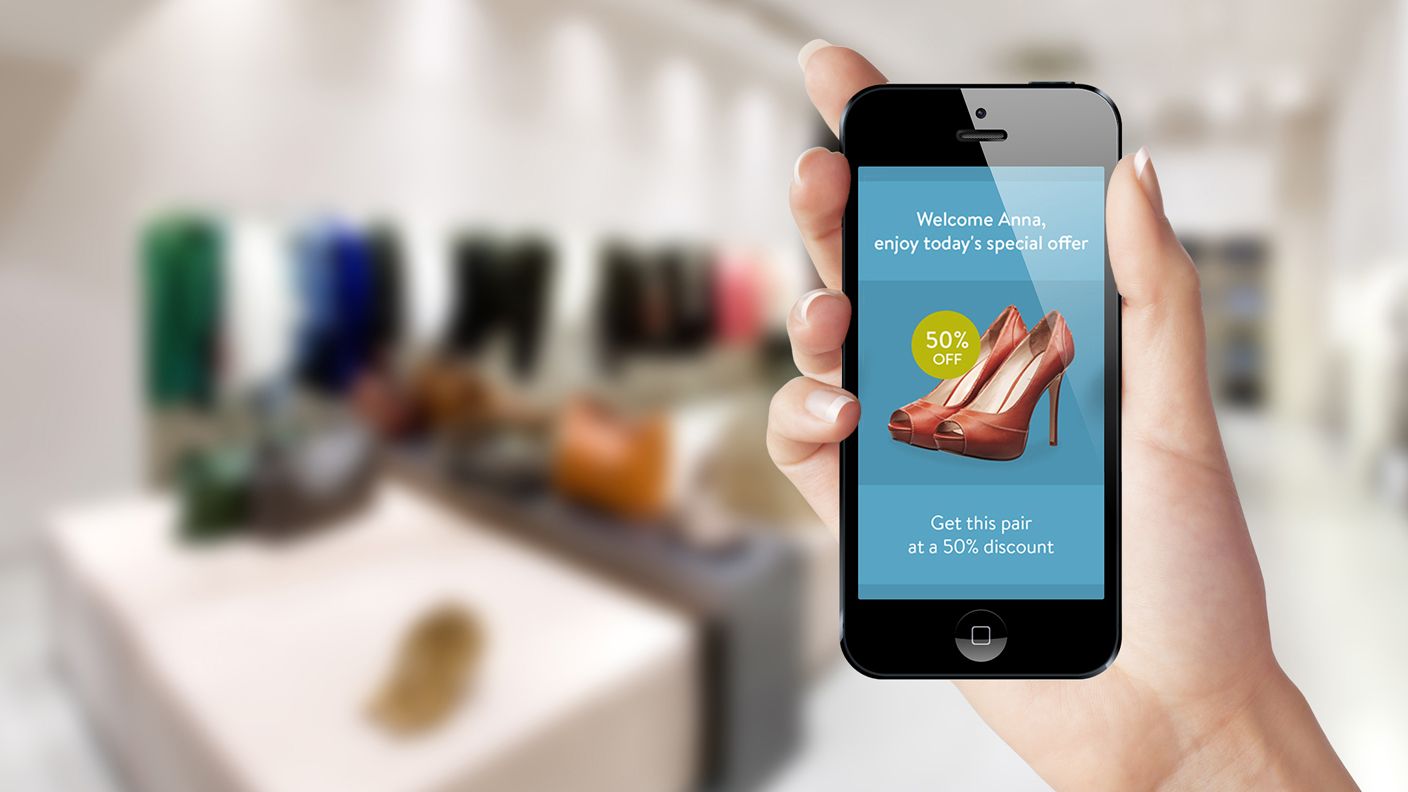The new iOS 7.1, which Apple launched this week, contained massively improved iBeacon functionality.
Among these improvements is that Apple has cancelled an element of user permission. Once you’ve installed a store’s app — say, for example, Apple’s own Apple store app — that store can put messages on your lock screen even if the app isn’t running!
I think it’s a real improvement. But I’m surprised privacy fans aren’t freaking out.
I interviewed Doug Thompson this week on my show, Tech News Today, who very clearly explained what iBeacon is and how Apple changed it. (Thompson is blogs on the BEEKn blog, which is focused on beacon technologies, design and development.) If you want a quick primer on what iBeacon is and how it’s been upgraded, I recommend my interview with him.
In a nutshell, the improvements to iBeacon fall into two categories. The first is in the area of general performance. Overall responsiveness for iBeacon is much better than before, according to developers who have tried it.
The second is in the area of permissions.
It’s a bi-product of the fact that the public doesn’t understand the magnitude of how iBeacon and beacon technology will change human culture that the techno-panic crowd isn’t freaking out about the update.
In the past, iBeacon was opt-in. Now, it’s opt-out. In the previous system, iBeacon-enabled stores, stadiums and museus were required to ask permission of the user for iBeacon access to their phones. Now, they no longer need that permission. Apple has already granted permission to the stores to access your iPhone.
You do have to install an app, though. For example, let’s say your local mall installs an iBeacon system for directions to stores, promotions, coupons and other information. Your iPhone won’t be affected by their iBeacon system unless you install the mall’s app. But once you do install the app, the app no longer needs to be running in order for the iBeacon system to interact with your phone.
So with the mall’s app not running at all, you’ll still get messages on your lock screen from the mall’s iBeacon system.
This is a huge shift for Apple. In the past, according to Thompson, an app had to be running in order to throw up messages onto the lock screen. Apple appears to be making an exception for iBeacon apps.
If you signed up for the mall’s system because you wanted to get discounts from the Gap. And later, the Gap goes out of business and is replaced by Victoria’s Secret, which also uses the mall’s iBeacon system for promotions, you’re now going to get underwear ads on your lock screen without granting any permission or even running the app.
Don’t get your panties in a bunch, though. Uninstalling the app, or re-setting the location permissions or shutting off Bluetooth will each opt you out of the mall’s iBeacon system.
You should also know that iBeacon beacons don’t actually track you or collect data from your iPhone. They can only transmit information TO your phone. They provide data about location to your iBeacon-supporting app, tell the app where you are with vastly higher precision than, say GPS or cell-tower triangulation can, and they can do it indoors. Any reporting of location, any transmission of data, any downloading of data happens through your phone’s WiFi or mobile broadband connection, controlled by the app and governed by the permissions you’ve granted.
What’s great about the new iBeacon, and it’s opt-out approach is that it should drive a lot more adoption toward iBeacon. In the past, any prospective retailer or app developer might have sifted through the details of iBeacon and found the prospect of getting people to use it daunting.
And ask yourself: How often have you, an Apple fan devoted enough to read Cult of Mac, use Apple’s iBeacon app when you’ve gone into the local Apple store. If you’re like the majority, you’ve never tried it. If you’re like one minority, you tried it once and never did again. The percentage of Apple store users who turn it on each time they go in almost certainly rounds to zero.
Under the 7.1 release, though, anyone who has installed the Apple store app will now get pinged when they go in. If Apple pings with useful or compelling information, the user will launch the app and participate.
In other words, making iBeacon opt-out for the users who have installed the app is a minimum requirement for it to have a prayer of being useful to stores and app developers.
I think the upgrade to iBeacon, and specifically the conversion of notifications from opt in to opt out is a great one. But I’m frankly surprised that privacy fans, the sort of people who falsely believed the old iBeacon was already a privacy violation, aren’t having fits about this new feature.


